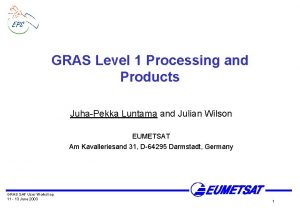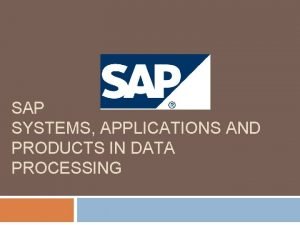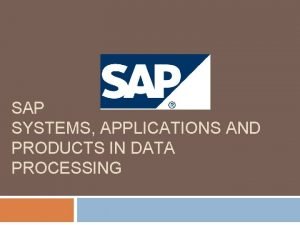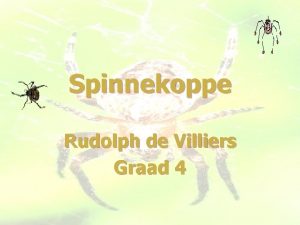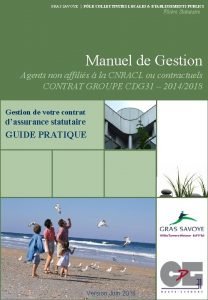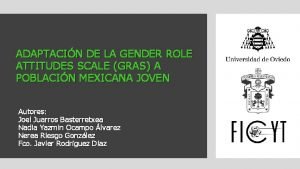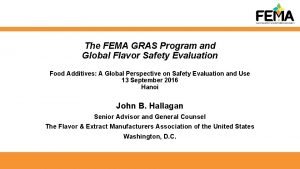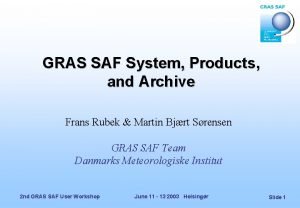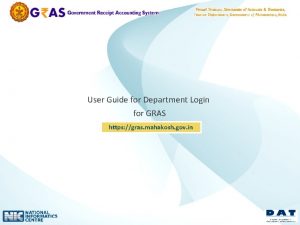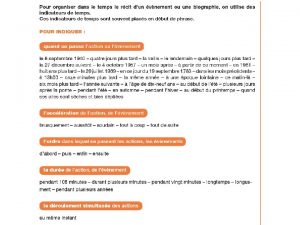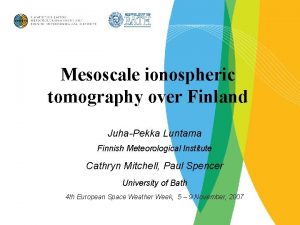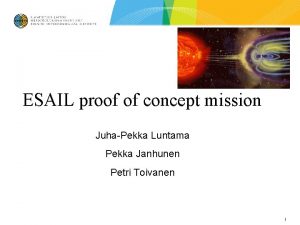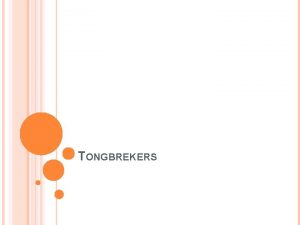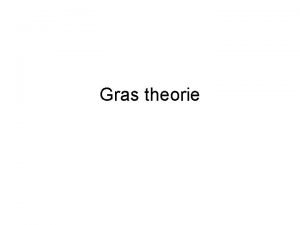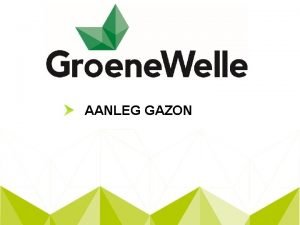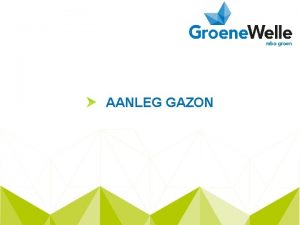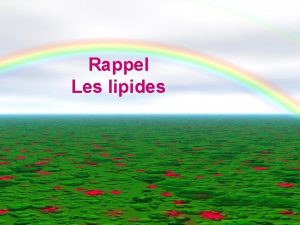GRAS Level 1 Processing and Products JuhaPekka Luntama

















- Slides: 17

GRAS Level 1 Processing and Products Juha-Pekka Luntama and Julian Wilson EUMETSAT Am Kavalleriesand 31, D-64295 Darmstadt, Germany GRAS SAF User Workshop 11 - 13 June 2003 1

Itinerary 1) Introduction 2) GRAS measurement system 3) GRAS level 1 data processing 4) GRAS level 1 products 5) Conclusions GRAS SAF User Workshop 11 - 13 June 2003 2

Introduction • EUMETSAT Polar System (EPS) is the European component of the joint European/US polar satellite system (IJPS) • EPS mission consists of three Metop satellites with a payload of eight meteorological instruments • The first Metop satellite is launched in second half of 2005 • The total duration of the EPS mission is 14 years => NRT products for NWP applications and continuity of radio occultation data for climate monitoring • GRAS receiver has been developed especially for radio occultation measurements within the EPS framework by ESA and EUMETSAT GRAS SAF User Workshop 11 - 13 June 2003 3

Metop spacecraft GRAS GOME AVHRR HIRS IASI AMSU-A 1 ASCAT MHS GRAS SAF User Workshop 11 - 13 June 2003 AMSU-A 2 4

NRT Challenge • EPS GRAS is the first RO mission that has been from the beginning designed for operational applications • NRT requirements for GRAS product dissemination are 2 h 15 min for level 1 b and 3 h for level 2 from the observation • Analysis of the NRT feasibility has revealed two main risks: – Timely availability of the auxiliary data – NRT Precise Orbit Determination of the LEO satellite • Mitigation of these risks is incorporated in the GRAS Measurement System design • There has been no reason to compromise the occultation data processing due to the NRT requirements GRAS SAF User Workshop 11 - 13 June 2003 5

GRAS NRT Product requirements GRAS SAF User Workshop 11 - 13 June 2003 6

GRAS measurement system GRAS SAF User Workshop 11 - 13 June 2003 • GRAS GSN provides GPS POD products and ground based measurements • Level 1 b products are processed and disseminated by the EPS CGS • Level 2 products are processed and disseminated by the GRAS Meteorology SAF • Archived products include raw data, level 1 b, level 2 and all GSN products • Off-line user access to archived products via EUMETSAT UMARF 7

GRAS receiver • • • GRAS SAF User Workshop 11 - 13 June 2003 12 bi-frequency channels Codeless-mode capability Oven stabilised USO (Allan deviation 10 -12) Directional high gain occultation antennas for minimising local multipath Onboard DSP => autonomous operations 8

GRAS GSN Service • GRAS GSN is a service to provide GPS state vectors, clock offset estimates, and clock differencing data for GRAS data processing • GSN will contain a network of 25 fiducial stations • GSN coverage for the GPS constellation is > 200 % to ensure service availability via redundancy • The GSN Service is designed to support the GRAS NRT data processing requirements GRAS SAF User Workshop 11 - 13 June 2003 9

GRAS GSN products • • • GPS NRT state vectors (15 min sampling) GPS NRT clock offset estimates (1 s sampling) Fiducial station clock offset estimates (1 s sampling) Troposphere Zenith Delay (TZD) Sounding Support Data (SSD) for clock correction: – L 1 and L 2 carrier phase – L 1 and L 2 pseudorange – L 1 and L 2 SNR • GSN Configuration and Status database • EOP GRAS SAF User Workshop 11 - 13 June 2003 10

GRAS level 1 processing GRAS SAF User Workshop 11 - 13 June 2003 11

GRAS level 1 a processing GRAS SAF User Workshop 11 - 13 June 2003 12

GRAS level 1 NRT data products GRAS SAF User Workshop 11 - 13 June 2003 13

GRAS level 1 NRT data products (cont. ) GRAS SAF User Workshop 11 - 13 June 2003 14

Level 1 product accuracy • Combined bending angle error at 30 km for azimuth 30 : – GRAS dependent errors: – GRAS independent errors: – RSS 0. 420 rad 0. 662 rad 0. 784 rad • When azimuth angle is > 45° the GRAS dependent errors increase to 0. 651 rad => Total RSS for 90 % of the measurements < 0. 935 rad. • Analysis by the instrument manufacturer indicates that statistically about 8 % of the observations are outside the accuracy specification => 40 occultations out of the daily 500 have errors larger than 1 rad GRAS SAF User Workshop 11 - 13 June 2003 15

GRAS level 1 processing summary • GRAS does not directly produce phase, amplitude, SNR, or pseudorange measurements => they have to be derived from the raw data using a measurement reassembly function • GRAS level 1 processing will include GO, WO, and raw sampling mode data processing chains • Partially overlapping bending angle profiles from all processing chains are disseminated to the users • A software tool for combining and smoothing the bending angle profiles for NWP is planned by the GRAS SAF • Metop NRT POD problem has been solved by using a SRIF algorithm together with the NAPEOS S/W and by solving the Metop orbit in short (< 10 min) arcs GRAS SAF User Workshop 11 - 13 June 2003 16

Conclusions • The objective of the EPS GRAS mission is to provide NWP users operationally radio occultation data products • The EPS mission starts in 2005 and provides data continuously at least for 14 years • The stringent NRT timeliness requirements have made the development of the GRAS measurement system and the data processing chain challenging • GRAS data processing and dissemination are performed by the EPS CGS (level 1 b ) and by the GRAS Meteorology SAF (level 2 ) • All archived GRAS products (level 0, level 1 b, and level 2) shall be made available via the EUMETSAT UMARF facility • Analysis and study results indicate that the NRT data processing with the required accuracy is feasible for about 92 % of the observations GRAS SAF User Workshop 11 - 13 June 2003 17
 Juha-pekka luntama
Juha-pekka luntama List 5 innovative and 5 functional products
List 5 innovative and 5 functional products Systems applications and products
Systems applications and products Systems, applications & products in data processing
Systems, applications & products in data processing Coke vs pepsi sales
Coke vs pepsi sales Piesang spinnekop
Piesang spinnekop It is the literal meaning of photography
It is the literal meaning of photography Gras savoye collectivités locales lyon
Gras savoye collectivités locales lyon Mots en gras
Mots en gras Escala de gras
Escala de gras Who used first the word photography?
Who used first the word photography? Fema gras certification
Fema gras certification Gras bilong hed
Gras bilong hed Foie gras egypt
Foie gras egypt Saf
Saf Gras mahakosh gov
Gras mahakosh gov Gros et gras le teint frais et la bouche vermeille
Gros et gras le teint frais et la bouche vermeille Les information suivantes
Les information suivantes
